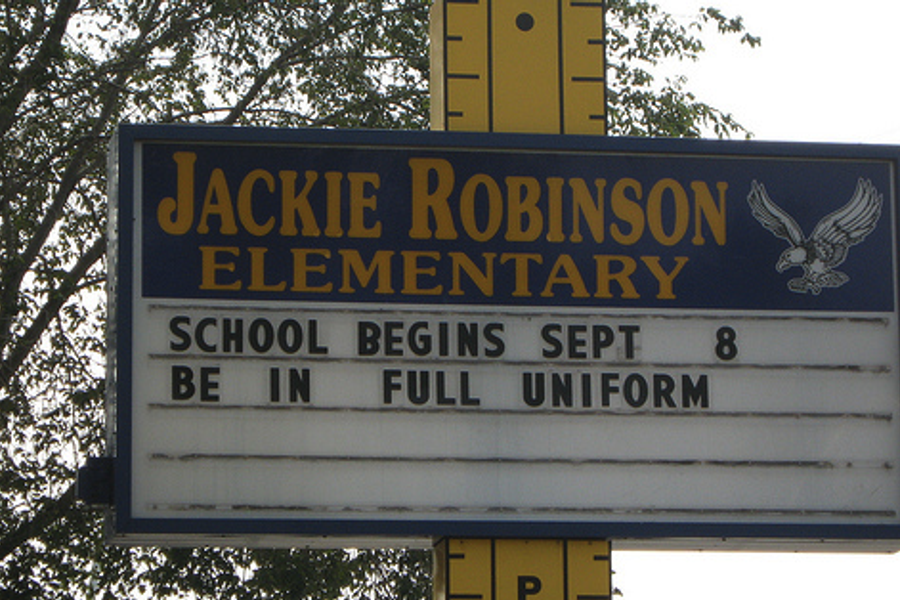
The ongoing dilemma over what to do about public education has resulted in recent controversies over standardized tests, charter schools and who should be teaching and how they should do it.
Often ignored in reform efforts, however, are the disastrous effects of poverty on students. On Tuesday, Stand Up! Chicago and the Chicago Teachers Union (CTU) collaboratively released a report that details how poverty-level wages are threatening the future of many of the city’s public school’s students. Titled “Fight for the Future: How Low Wages Are Failing Children in Chicago’s Schools,” the research, accrued from a wide range of sources spanning several years, presents readers with a harsh reality: poverty is the root of poor student performance.
This notion is hardly new, nor is it unique to Chicago. As Helen F. Ladd and Edward B. Fiske wrote in a New York Times op-ed last year:
No one seriously disputes the fact that students from disadvantaged households perform less well in school, on average, than their peers from more advantaged backgrounds. But rather than confront this fact of life head-on, our policy makers mistakenly continue to reason that, since they cannot change the backgrounds of students, they should focus on things they can control.
Focusing on “things that they can control” is exactly what Chicago Public Schools (CPS) has done, producing a school system where student achievement has continued to decline while the administration implements measures that have failed repeatedly: funding schools based on achievement and expecting teachers to overcome socioeconomic factors that hinder education. And so, CPS students, teachers and parents are stuck in a system that will inevitably fail—in 2012, 35 percent of CPS students dropped out of school entirely, more than double the national rate—as long as reformation continues to miss the mark. As The New Yorker reports:
The dirty little secret of education reform is that one of the greatest predictors of academic success is household income. Even the standardized tests used for college admissions, like the S.A.T.s, are essentially proxies for income: students from better-off backgrounds get higher scores. The educational system is supposed to be an engine of opportunity and social readjustment, but in some ways it operates as a perpetuator of the status quo.
How to escape that status quo in Chicago, where 86 percent of CPS students come from low-income households? CTU and Stand Up! Chicago have a hypothesis: Raise the wages for low-income families in Chicago, and test scores, graduation rates and college admissions will go up. And it’s feasible that low wages could be increased across the board, an effort that the CTU and Stand Up! believe can result in citywide benefits. In a preceding report titled “A Case for 15: A Low Wage Work Crisis,” Stand Up! Chicago makes the case:
Downtown employers can afford a very significant increase in wages paid to their low wage workers. McDonald’s has increased profits from $4.3 billion in 2008 to $5.5 billion in 2011. TJX, owner of TJ Maxx and Marshall’s, saw profits rise in the same period from $881 million to $1.5 billion. Chipotle profits increased over that period from $78 million to $215 million. CEOs for downtown Chicago stores average $8.3 million per year in annual compensation, an hourly rate of over $4,011. Meanwhile, the cost of raising all low wage workers in retail and food service downtown to $15 per hour is $103 million, a very small percentage of the billions going through the cash registers each year. Even if employers were to pass on the entirety of this cost to the consumer, it would only raise prices by 2.6%, a negligible amount that is unlikely to affect consumer spending patterns in any significant way.
Compounding the income-disparity problem is CPS’ expansion of privately-administered charter schools, at the expense of low-income neighborhood public schools. Contrary to popular belief, children from neighborhood schools outperform their charter school peers on standardized tests, the measure upon which 25-percent of teacher performance is based, as of 2010 (by 2015, that percentage is set to rise to 40).
Nevertheless, in May of this year CPS announced plans to open 60 charter schools. Back in 2004, CPS launched an agenda to close 60 “low performing” neighborhood schools and open 100 new schools in their place. According to the Stand Up!/CTU report, this effort represents “a strategy to attract and retain middle-class families in the city, while controlling and closing schools in low-income communities of color.”
The Reader explains why much of the public approves of charter schools while condemning CPS teachers:
It’s based on a myth that goes like this: charters far outperform unionized schools because countless “weak” teachers keep their jobs thanks to union contracts that protect tenure. No matter that tenure no longer exists in the Chicago Public Schools, or that factors like poverty and crime and parental involvement may play some role.
It’s also worth noting is that charter schools provide a lucrative opportunity for investors. According to Reuters, the U.S. spends over half a trillion dollars a year on K-12 education. When accounting for college and mid-career training, education spending represents 9 percent of GDP, which makes it very enticing and profitable to private equity firms. In August, Reuters reports, investors met in a private club in Manhattan to discuss the vast potential for profit in public education:
Think about the upcoming rollout of new national academic standards for public schools, [Robert Lytle, partner in the investment firm Parthenon Group] urged the crowd. [A] huge number of schools will suddenly look really bad, their students testing way behind in reading and math. They’ll want help, quick. And private, for-profit vendors selling lesson plans, educational software and student assessments will be right there to provide it…“You start to see entire ecosystems of investment opportunity lining up,” he said, “.…It could get really, really big.’”
And so the majority of public school children attend school each weekday without having had enough to eat, expected to learn without the same resources provided to the middle-class students. Meanwhile, CPS focuses on the teachers, holding them to standards that economic reality will inevitably prevent them from meeting. But perhaps, as the efforts of Stand Up! and CTU suggest, if CPS made a serious effort address the socioeconomic factors it assumes to be out of its control, it would find that they aren’t so immutable after all.
Please consider supporting our work.

I hope you found this article important. Before you leave, I want to ask you to consider supporting our work with a donation. In These Times needs readers like you to help sustain our mission. We don’t depend on—or want—corporate advertising or deep-pocketed billionaires to fund our journalism. We’re supported by you, the reader, so we can focus on covering the issues that matter most to the progressive movement without fear or compromise.
Our work isn’t hidden behind a paywall because of people like you who support our journalism. We want to keep it that way. If you value the work we do and the movements we cover, please consider donating to In These Times.


